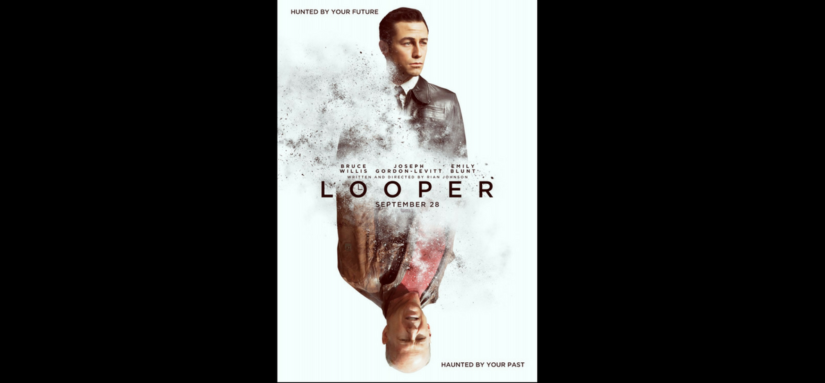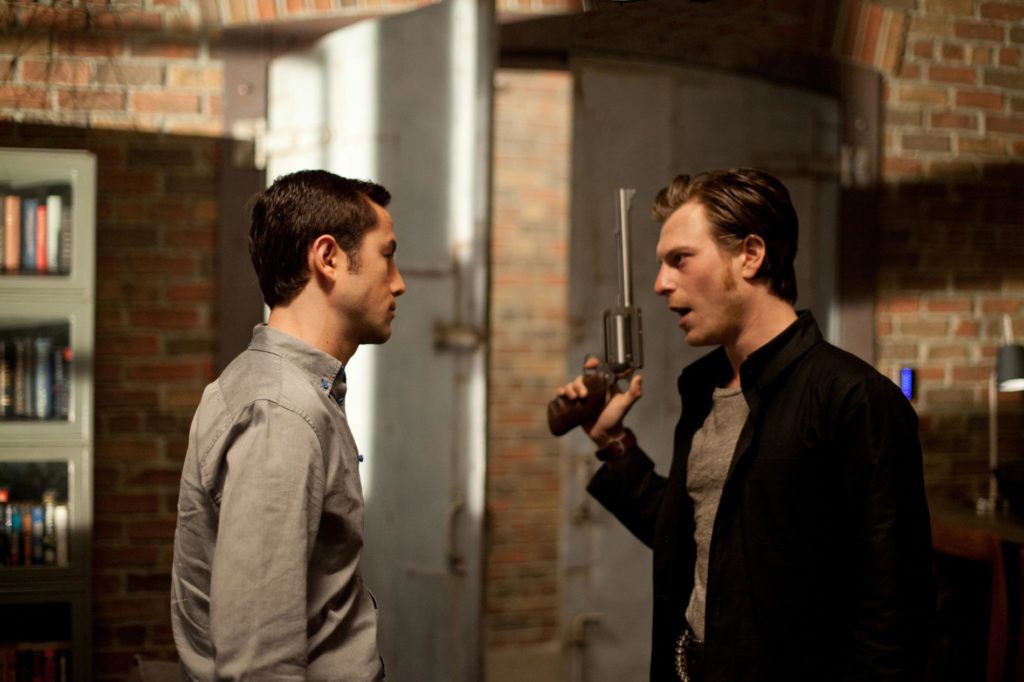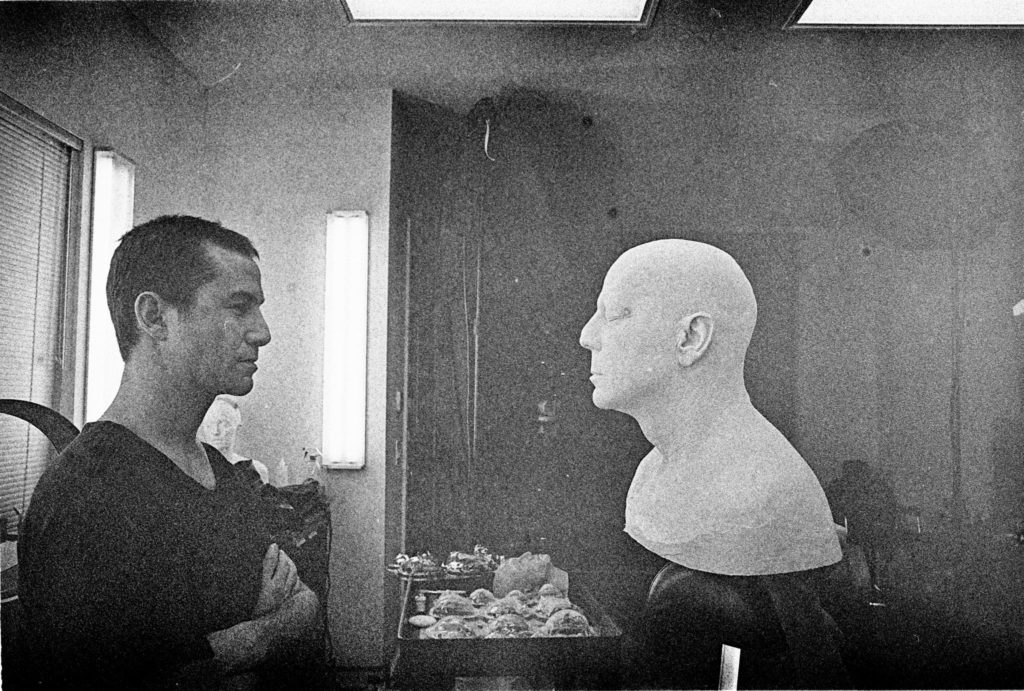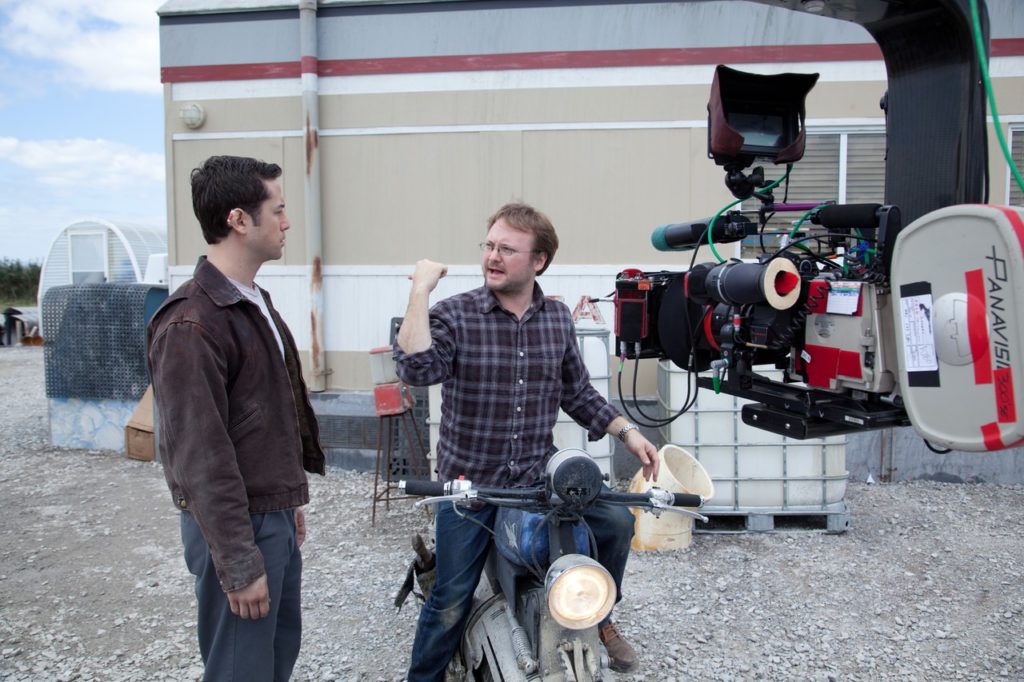Looper Offers a Glimpse into what Rian Johnson’s Star Wars: Episode VIII May Hold
“Love lost, such a cost,
Give me things
that don’t get lost.
Like a coin that won’t get tossed
Rolling home to you.
Old man take a look at my life
I’m a lot like you” (“Old Man” by Neil Young).
How do you land the coveted gig of helming the next installment in the Star Wars franchise (Episode VIII)? In director Rian Johnson’s case, you weave a smart web that shows you can walk the tight rope of genre filmmaking without sacrificing character or bogging down the narrative in cumbersome, gear-grinding technical details.
Released in the autumn of 2012, Looper was written and directed by Johnson, with Joseph Gordon-Levitt in mind to play the lead role of time-tripping bounty hunter Joe. The duo had previously worked together on the genre-bending neo noir Brick (2005). Looper was only Johnson’s third feature (following The Brothers Bloom released in 2008), but he had quickly established a name for himself as an up-and-comer worthy of the time and attention of the multiplex audiences and the industry alike. He caught the eye of Bruce Willis (much as a young Quentin Tarantino did, who scored the Die Hard superstar for a key role in just his second feature, Pulp Fiction, which was a bet that paid out nicely and firmly planted Tarantino on the map as a household name).
What’s the elevator pitch for Looper? Here’s how Joseph Gordon-Levitt’s character “Joe” summed in up in a voiceover during the film’s opening:
“Time travel has not yet been invented. But thirty years from now, it will have been. It will be instantly outlawed, used only in secret by only the largest criminal organizations. It’s nearly impossible to dispose of a body in the future… I’m told. Tagging techniques, whatnot. So when these criminal organizations in the future need someone gone, they use specialized assassins in our present called “Loopers.” And so, my employers in the future nab the target, they zap them back to me – their Looper. He appears, hands tied and head sacked, and I do the necessaries. Collect my silver. So the target has vanished from the future, and I’ve just disposed of a body that technically does not exist. Clean.”
On the surface Looper is a time-travel science fiction film but Rian Johnson is one of those capable conductors who can tell you what time it is, and how to build the watch. Looper is so polished that it simply plows through space and time, pushing viewers along on the ride with such skill and ease that time travel effectively takes a back seat to the characters of mighty young Joe (Gordon-Levitt) and mightier older Joe (Willis), who play hide and seek throughout the past and future, one loop trying to tie up the other loose end like a knot. Older Joe (Willis) is trying to make sure younger Joe (Gordon-Levitt) doesn’t stray from the path or take any detours that would derail older Joe’s ride off into the sunset. The details are important to the plot and to Rian Johnson, but he doesn’t want you getting hung up on the nuts-and-bolts notion of time travel. Johnson’s film presupposes the viewer knows all about Hollywood’s take on time travel science and the timeline altering Bradbury Butterfly Effect (from the short story “A Sound of Thunder”), thanks to films like Back to the Future and The Terminator, and tinkers with and builds upon that mythology.
Looper expects you to take the leap of faith on several levels, but for this film to work, the viewer first (and primarily) has to buy into Gordon-Levitt essentially playing a younger version of Bruce Willis, even when, especially when, sharing screen time with Willis. Jurassic Park didn’t work because you believed the science mumbo jumbo of genetic cloning. It worked because you gleefully suspended your disbelief thanks to the movie magic on display in front of your very eyes, that dinosaurs like the T-Rex and the raptors were chasing after Jeff Goldblum and Sam Neill, evolution chasing after its very own tail, while you slurped down your cold Pepsi with your bucket of popcorn on your lap. That’s not to say Johnson cheats the audience or is all style and no substance; quite the opposite really, as Johnson has done his homework (prior to filming, a copy of the script was even given to Shane Carruth, director of the highly regarded indie sci fi film Primer, for his honest feedback on the way time travel was handled in Looper).
You have to allow yourself to believe in the possibility of time travel for the sake of the film, but the crux of the Looper is contingent upon you believing Gordon-Levitt and Bruce Willis are the same person, just at different stages of their life, albeit simultaneously in many scenes. The Gordon-Levitt/Bruce Willis slight of hand is a bit of a stretch but for most viewers it seemed to work. Joseph Gordon-Levitt studied the films of Bruce Willis, learning to channel him by capturing the very essence of his mannerisms, an arch of the eyebrow here, a tilt of the head or sideways glance there. Willis recorded parts of Gordon-Levitt’s dialogue so the young actor could listen to it on his playlist on repeat. It harkens back to the nothing-up-our-sleeves performances from John Travolta and Nic Cage in John Woo’s flimsy in theory (but fun) gangster fantasy Face/Off. Escapism entertainment at its finest.
And for Looper, the face-off, so to speak, required some highly effective lo-fi old school make-up designs and applications. Gordon-Levitt sat in the make-up chair every morning for over three hours, to get the bald eagle-like facial features of Willis, with prosthetics created by makeup artists Jamie Kelman and Kazu Tsuji (Gordon-Levitt had met and worked with Tsuji previously on G.I. Joe: The Rise of Cobra). This prosthetic makeup is the secret weapon of Looper, because it largely succeeds to mask and morph the actor without proving too distracting to the viewer. Anything less and the whole house of cards would collapse.
Rian Johnson is a fan of practical effects, and the film is better for it. Looper is chock full of them, from the make-up to the wire work (digitally erased from the frame) to the set design (the film was shot mostly in Louisiana, so the Kansas corn fields called for in the script became sugar cane fields, and since Looper was filmed when sugar cane was out of season, much of what you see was propped up or touched up with something as simple as spray paint). The twilight cityscapes in Johnson’s film feel weathered, lived in, eroding under the effects of unkind seasons and unrelenting miles, similar to Ridley Scott’s Blade Runner or George Miller’s Mad Max, though this was accomplished via Matte painting. (When pushed, Johnson would always try for practical effects first, or a combination of practical and digital, using digital mostly as a last resort or when it was the only true working option.)
The best of the Star Wars entries are those that focus the emphasis firmly on the hearts of the characters, and less on the digital and political Swiss Cheese Whiz of the Lucas prequels. Audiences identify most with that universally motivating spirit in the galaxy—the Force versus the Dark Side, good trying to overcome the evil lurking in the shadows, perhaps cast from the imperial Death Star, or maybe just from within. It became a cultural phenomenon set off into orbit thanks to the original and then put into hyper drive with its sequel, The Empire Strikes Back. Part serialized sci fi opera, part rocket ship Western set in a galaxy far, far away, they were epics driven by the ambitious, hopeful dreams—and riding upon the very fates—of their characters.
Similarly, Rian Johnson said he doesn’t see Looper as a time traveling sci fi story; he prepared for the film by rereading Macbeth. He acknowledged that the film shifts, much like the landscape of one’s memory over time, eventually transforming into and owing more to the Western genre. Make no mistake: ultimately Looper is a sci fi Western, with its pistol-twirling, holster-wearing bandits (see: Noah Segan’s bumbling “Kid Blue”, and hey, are those cowboy boots he’s wearing?), to Paul Dano’s “Seth” on his hovering motorcycle crotch rocket (reminiscent of a bucking horse), to Piper Perabo’s whore-with-a-heart-of-gold “Suzie”, to the silver bars the “loopers” are rewarded with, to the farm house in the middle of nowhere protected by matriarch on-a personal mission to make good on past mistakes “Sara” (played with an understated world-weariness by Emily Blunt), and so on.
As the young version of Joe concludes: “Then I saw it, I saw a mom who would die for her son, a man who would kill for his wife, a boy, angry and alone, laid out in front of him the bad path. I saw it and the path was a circle, round and round. So I changed it.”
You might not be able to identify with time travel on a personal level, but you are likely able to relate to undying, unconditional love and the need to protect a child, a family member, or a significant other. Looper is about one man’s redemption, sacrificing his own interests and well being to protect someone else’s.
Only time will tell what’s in store for the immediate future of the Star Wars franchise, but if Looper is any indication, the Force is in very capable hands with director Rian Johnson.






Comments are closed.